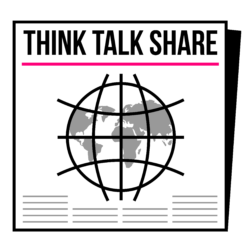If you’ve ever sat in an AP United States History class, you’re very familiar with the time periods: Periods 1-9, the time periods that define United States history as we know it, from the discovery of the Americas through Reagan Conservatism and the 1990s. These time periods, characterized by key words and phrases, give the historian a window to look through to see, analyze, and learn from past events. Example periods include: Period 4: the era leading up to the Civil War, an era plagued by sectionalism; Period 6: the Gilded Age, the age of titans of industry and inequality; or Period 7: the Progressive Era, the age of change and well, progress. And if you are familiar with this schema, you will also recognize the question posed by all history teachers, “What do we call our era? What is Period 10?”
I propose that Time Period 10 is Innovation and Inequality, a period defined by two opposing developments. Period 10 encompasses the rapid technological success fostered by the rise of Steve Jobs, Mark Zuckerberg, and Jeff Bezos, sophisticated medical care, the rise of social media, and increased globalization. However, at the same time that our society has progressed so much, we’ve left so many behind. While Time Period 10 encompasses progress and technology, it also has to reckon with the extreme poverty, inequality, and divisiveness that have been left behind in the shadow of all of this progress.
The decades following WWII were full of technological experimentation, eventually leading to the first internet connection running from UCLA to Stanford University. However, this technological boom came with extreme socioeconomic consequences. The creation of smart industry along the coasts slowly created a divide within our country, leaving a group of mostly less educated, less upwardly mobile Americans in the middle of the country. Representing innovation, opportunity, and success, smart cities like Los Angeles, San Francisco, Boston, and New York City cultivated a city-centric culture, fostering man-made urban geography patterns such as white flight and urban sprawl. The middle of the country lagged at a lower education level as smart cities continued to boom and flourish. As a result, the scientific advances that inadvertently divided our country have widened a cultural divide and fostered partisanship. These regional divides have not only led to inequality regarding technology but also created a political environment driven by nationalism and marked by anti-elitism, anti-immigrant sentiment, racism, an uptick in hate crimes, and a widening of the poverty gap.
Yet the difference between 2020 and the decades following WWII is young people. We have drive. We have passion. We have anger. We have a voice. The youth characterize Period 10. With the benefits of technology and innovation, within seconds young people have posted their opinions and spread information. Within days, passionate young leaders have organized mass protests to protest police brutality. Within weeks, Greta Thunberg had the globe’s attention as she spoke to the United Nations about the necessity of acting now to subvert climate change. And Emma Gonzales and her peers rapidly rallied a nation around gun violence prevention. Through these social media campaigns, through technology and innovation, young people have had a voice. But we need to look back at history and realize a voice through social media is not enough. Although most of us are yet too young to vote, we need to recognize the importance of our future vote. During the founding of our country, when the first two-party system was being developed, voting qualifications were put in place to keep the “common, uneducated man” from “interfering” with our nation’s political systems. For years this system endured, until Andrew Jackson and Jacksonian Democracy arrived, revolutionizing how our country sees voting. By 2016, however, this right to vote was taken for granted. Many young people who could vote may have shared their thoughts through social media, but didn’t exercise that right to vote and now realize the significance of standing silent. As we turn to the election of 2020, young voters must decide, in the face of racism, poverty, climate change, and now coronavirus, to vote and demand a change.
So as we continue to define Period 10, the period of innovation and inequality, we need to recognize that as new horizons of nuclear energy, military drones, and the next iPhone continue to develop, the political divide in our country will continue to grow, magnifying inequality. Quoting one of my favorite movies, The Hate U Give, “It’s the same story but a different name.” While this quote references the tragic killing of a black teenager by a white police officer, remarkably fitting for this time as we see the BLM movement unfold, this quote also represents the bigger picture of current American culture and politics. We have a history of anti-immigrant sentiment in this country which remains. We have a history of extreme sectionalism and racism which remains. We have extremes of inequality and partisanship that persist. As we recognize these tragedies of Period 10, we need to realize that the fate of Time Period 11 is resting in the sweaty hands of passionate, determined, driven young people. We need to vote for lasting change.


